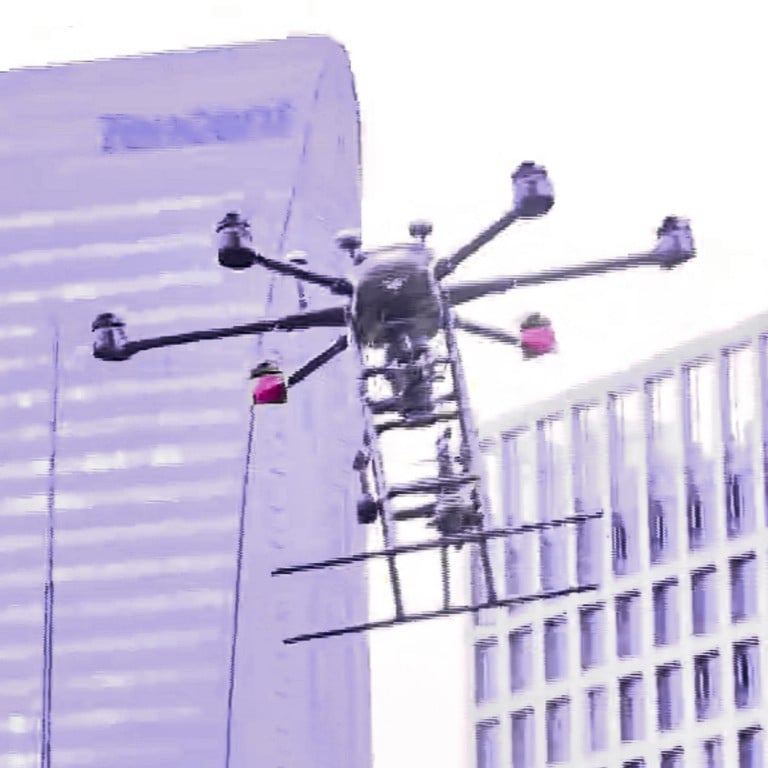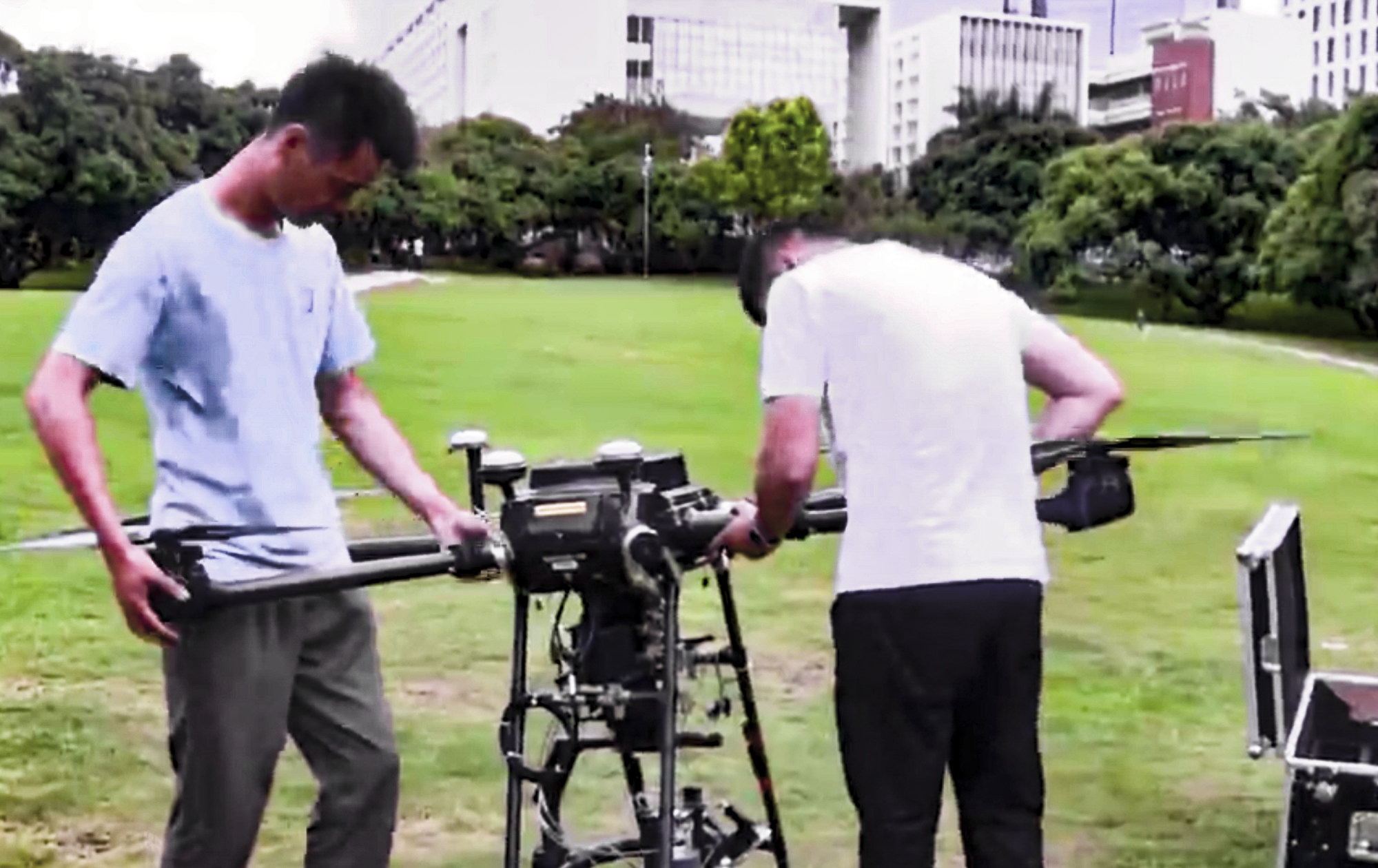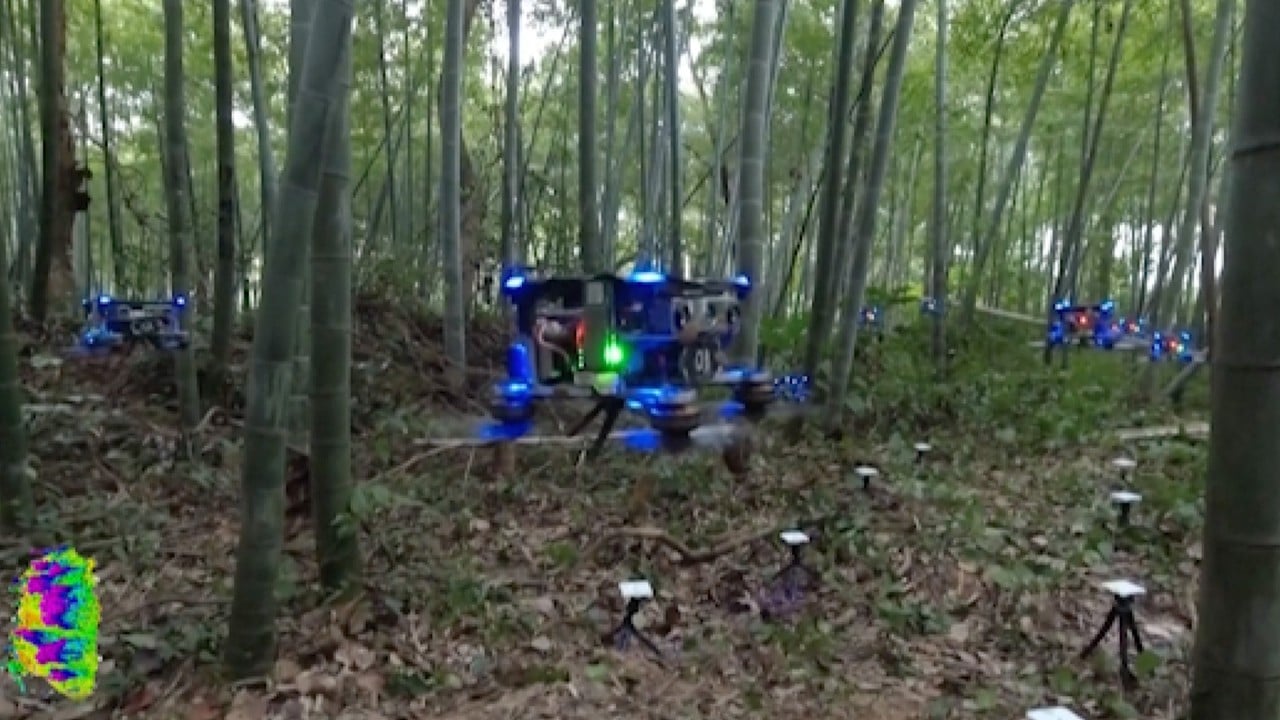
Chinese radar breakthrough will see commercial drones soar in power and applications, says Shenzhen team
- When the team raised the idea of new microwave radar technology, known as 1-bit SAR, about eight years ago, some experts thought it would never work
- Lead scientist of the project deems it ‘a disruptive technology’; it can be applied to intelligent driving, logistics and emergency rescue and disaster relief
In the past, such a powerful radar system was only available for military drones, such as the Predator or Global Hawk, because the technology was big, sophisticated and consumed a huge amount of power.

Professor Huang Lei, lead scientist of the project with Shenzhen University, called the team’s new gadget “a disruptive technology”.
Besides drones, “it can be popularised and applied to other fields, such as intelligent driving, smart logistics, smart cities, emergency rescue and disaster relief to better serve the national economy and people’s livelihood”, he was quoted as saying in a report by Shenzhen Evening News on Monday.
Most civilian drones use optical cameras or laser sensors and are capable of only flying on a clear day with good visibility.
The SAR can also identify material properties, moisture and other high-value information that is not obvious with optical imaging but of great importance in the military.
But to obtain a detailed image, the radar device usually has to collect, analyse and transmit a huge amount of data that makes the system bulky, costly and energy-intensive, significantly limiting its applications.
China’s military looks for new drones, intelligent vehicles for logistics
When Huang’s team raised the idea of the new microwave radar technology, known as 1-bit SAR, about eight years ago, some experts thought it would never work.
A key aspect of this new technology lies in a subversive imaging scheme, the 1-bit quantisation, or data compression, of analogue signals through non-linear mapping. It means mathematically converting a complex, two-dimensional radar image into a one-dimensional curve.
This algorithm significantly reduces the size, complexity and power consumption of a SAR without harming the image quality.
Huang’s team was not the first to come up with the idea, but previous attempts did not reach the practical stage because critical information was lost during the conversion.
The researchers said the performance of traditional SAR had almost reached its limits after a half-century of development because of the restrictions of electronic devices.
The 1-bit SAR technology opens another track, promising low-cost, lightweight, high-performance, high-speed radar for target detection, tracking, imaging and identification, they said.
The new technology was especially useful for applications with limited resources.
“At the same resolution, the data volume could be reduced by more than 50 per cent,” said Zhao Bo, a member of Wang’s team.
Taser developer proposes armed drones to stop US school shootings
There is a race around the world to develop powerful radar for small drones.
The US Navy’s MQ-8 Fire Scout unmanned helicopter, for instance, carries a radar weighing less than 30kg (66 pounds).
A research team with the MIT Lincoln Laboratory said in a paper in 2018 they had developed a radar lighter than 1kg that could be carried by a hand-launched drone.



